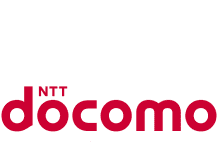
Few employees want to return to the office full-time as we emerge from the pandemic, and employers are okay with that. That’s what the GlobalData Professional Services Study commissioned by AT&T found. The study included professional services firms in the Legal Services, Accounting, Consulting, Architectural & Engineering, Construction, and Advertising Agency fields.
With the pandemic as proof that employees can work from home successfully – and even increase their productivity – both employers and employees have no desire to return to a more traditional work model. In fact, 60% of the firms polled for the GlobalData study see a post-pandemic future with both remote and in-office work. But with this shift to a hybrid work model comes challenges.

Supporting the hybrid workforce
With hybrid employees requiring the ability to access key enterprise applications and corporate data, regardless of location, IT decision makers have their work cut out for them. The world of hybrid work brings challenges in ensuring that employees have the right connectivity, collaboration tools to do their work effectively regardless of location, and security. The GlobaData survey shows that the top technology challenges of a hybrid workforce include:
Providing robust networking and connectivity
Supporting work-from-home employees
Security (specifically secure access service edge (SASE) and zero trust capabilities)
Cloud migration
Connectivity
Reliable high-speed connectivity is a key component of a powerful digital workplace where employees in different locations can seamlessly communicate and collaborate. Connectivity issues, voice quality, and video buffering are top pain points when supporting remote workers. The increase in remote working and an accelerated move towards cloud transformation mean connectivity and network services need to adapt to a work-from-anywhere model. A single, unified and centrally administered platform that can enable faster and efficient communications is key for the new hybrid model.
Collaboration
Just as important to the hybrid workforce are collaboration and productivity tools. More than half of those polled by GlobalData as part of this study say collaboration tools, like Zoom, Microsoft Teams, and WebEx, will continue to be an area of focus for investment going forward. The next generation of collaboration technology brings several tools together under one umbrella, supported by artificial intelligence, enabling employees to share and collaborate on documents at the same time. And intelligent software embedded into collaboration tools to reduce information overload for employees and extract insights to help them make more informed decisions has emerged as a recent technology tool. Productivity tools, like Microsoft 365, also ranked high in the GlobalData Professional Services Study. Almost 50% of respondents plan to invest in them as they strive to offer a consistent experience wherever the employee is working.
Security
One of the biggest challenges firms face with the hybrid work model is balancing the user experience for remote staff with security considerations. The swift pivot to remote work means incorporating key security elements like anti-malware, multi-level authentication, and end point protection didn’t always happen, leaving businesses vulnerable to cybercriminals. According to research, ransomware attacks rose 150% in 2020, and they continue to soar. A more distributed workforce, with a growing number of connected devices, significantly increases the risk for cyberattacks. As IT departments extend the concept of the secure, trusted network from the corporate premises to the network edge, whether this may be the home office or other remote locations, solutions based on the principles of SASE and zero trust are a big part of the future of work discussion.
Cloud Migration
The COVID-19 shift to remote work has further accelerated movement to the cloud. Cloud solutions are well suited to the needs of a more dispersed network, while for the firm, they offer advantages around ease of deployment, scalability, and cost effectiveness. But the GlobalData study found many professional services firms aren’t even halfway along in their journey to a cloud environment. Furthermore, those polled preferred a hybrid cloud, which introduces additional challenges.
The future of work
With the right solutions in place, technology can enable employees to work effectively regardless of location, while firms are reassured their network security is not compromised. Ongoing innovation of connectivity, security and collaborative tools will help businesses adapt to the changing realities of work and deliver a more inclusive employee experience as the future of work increasingly becomes one of ‘work from anywhere.’









